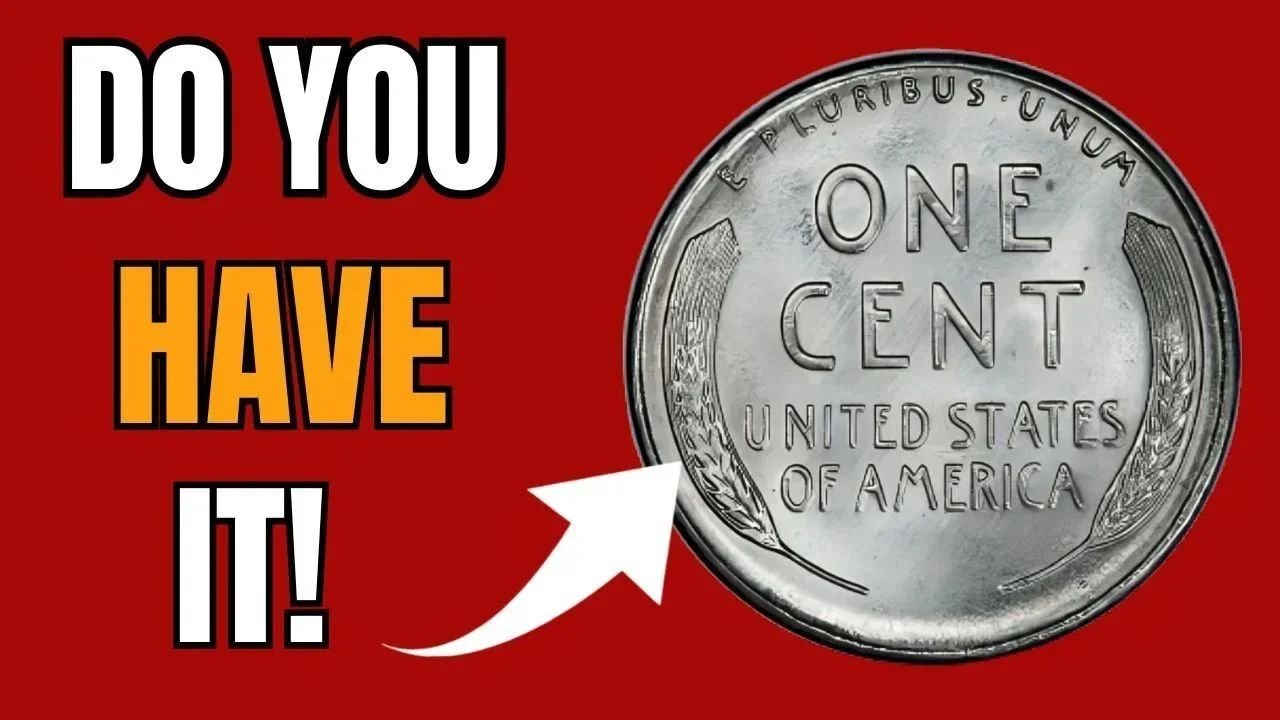The Lincoln Wheat Penny may seem like an ordinary piece of pocket change, but for coin collectors and treasure hunters, it’s a gateway to hidden riches. Minted from 1909 to 1958, these classic coins feature Abraham Lincoln on the front and two wheat stalks on the back — a design that has become iconic in American numismatics. Yet, among the billions of pennies produced, a handful of rare varieties are now worth up to $950,000.
If you’re holding on to a jar of old pennies, you could be sitting on a small fortune. Here’s how to spot the ones that truly matter.
The Legendary $950,000 Lincoln Wheat Penny
One of the most valuable Lincoln Wheat Pennies ever discovered is a 1943 Bronze Penny, a minting error that occurred during World War II.
In 1943, the U.S. Mint switched from copper to zinc-coated steel to conserve copper for ammunition and war supplies. However, a few leftover bronze planchets (coin blanks from 1942) were accidentally struck with the 1943 design. These error coins are so rare that only about 20 authentic examples are known to exist — and one sold for $950,000 at auction.
Key identifiers:
- Date: 1943
- Color: Reddish-brown (bronze), not silver-gray like steel
- Metal: Bronze (95% copper, 5% tin and zinc)
- Magnet test: It should not stick to a magnet
- Weight: About 3.11 grams (steel pennies weigh around 2.7 grams)
If you ever find a 1943 penny that looks coppery and doesn’t stick to a magnet — congratulations, you may have discovered a $950,000 treasure.
Other Rare Lincoln Wheat Pennies to Watch For
- 1909-S VDB – The very first year of issue. Only 484,000 were minted in San Francisco with the designer’s initials “V.D.B.” on the reverse. Value: Up to $60,000.
- 1914-D – A low-mintage coin from Denver, often counterfeited. Value: $20,000–$40,000 in high grade.
- 1922 No D – Coins minted in Denver without the “D” mint mark due to a worn die. Value: Up to $15,000.
- 1955 Double Die Obverse – Famous for its bold doubling in the words “LIBERTY” and “IN GOD WE TRUST.” Value: Up to $45,000.
- 1944 Steel Penny – Another minting mix-up where leftover steel planchets were used in 1944. Value: Up to $200,000.
Each of these pennies tells a story of historical significance, production quirks, and collector passion.
How to Identify Rare and Valuable Pennies
You don’t need to be a professional numismatist to find rare coins — just a keen eye and a few tools.
-
Check the Date and Mint Mark
- The date is on the front. The mint mark (“D,” “S,” or none) is below the year.
- Coins from San Francisco (“S”) and Denver (“D”) often have lower mintages.
-
Examine the Metal Composition
- Use a magnet — bronze pennies won’t stick; steel ones will.
- Look for unusual color or luster differences.
-
Search for Errors
- Doubling of letters, missing mint marks, or unusual edges can all signal valuable minting mistakes.
-
Check Condition
- Uncirculated or lightly worn coins fetch higher prices.
- Have valuable-looking coins graded by PCGS or NGC for certification.
-
Compare with Trusted References
- Use online guides, collector forums, and official auction records to confirm what you’ve found.
Why These Pennies Are Still Out There
Amazingly, some of these rare coins could still be floating around. Many Americans hold onto old change without realizing its worth, and coin collections often get passed down or mixed back into circulation. The next time you get change from a store or open an old coin jar, look closely — that one-cent coin might be worth hundreds of thousands of dollars.
FAQ: Lincoln Wheat Penny Valued at $950,000
Q1: Why is the 1943 Bronze Lincoln Penny worth so much?
A: It’s an extremely rare minting error caused when leftover bronze planchets from 1942 were mistakenly used in 1943, making it one of the most famous U.S. coins ever struck.
Q2: How many 1943 Bronze Pennies exist?
A: Fewer than 20 authentic examples are known, across the Philadelphia, Denver, and San Francisco mints.
Q3: How can I check if my 1943 penny is real?
A: Use a magnet — if it doesn’t stick, it could be bronze. Get it authenticated by a professional grading service like PCGS or NGC.
Q4: Can I still find valuable Wheat Pennies in circulation?
A: Rarely, but yes. Many valuable coins have been discovered in change jars, estate sales, and inherited collections.
Q5: Where can I sell a rare Lincoln Wheat Penny?
A: Reputable coin dealers, major auction houses like Heritage Auctions, or online certified coin marketplaces are your best options.
Q6: What’s the easiest way to start checking my pennies?
A: Begin with any pre-1959 Lincoln pennies — those are all Wheat Cents. Look for the dates mentioned above, unusual coloring, or clear minting errors.






